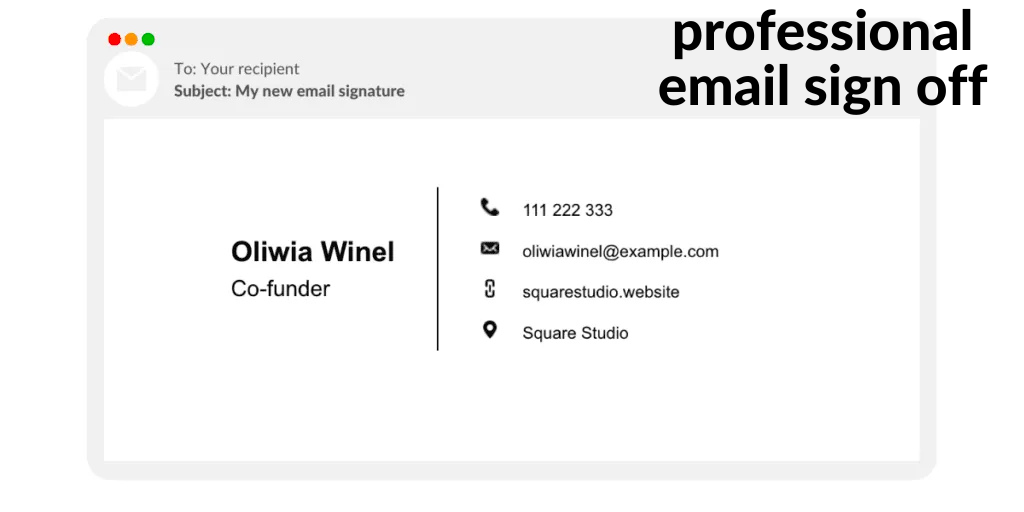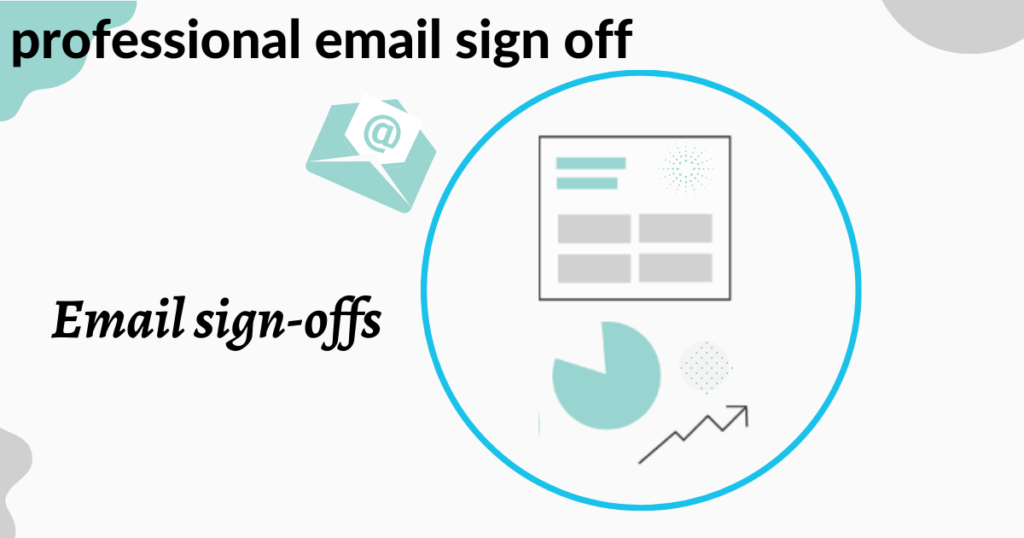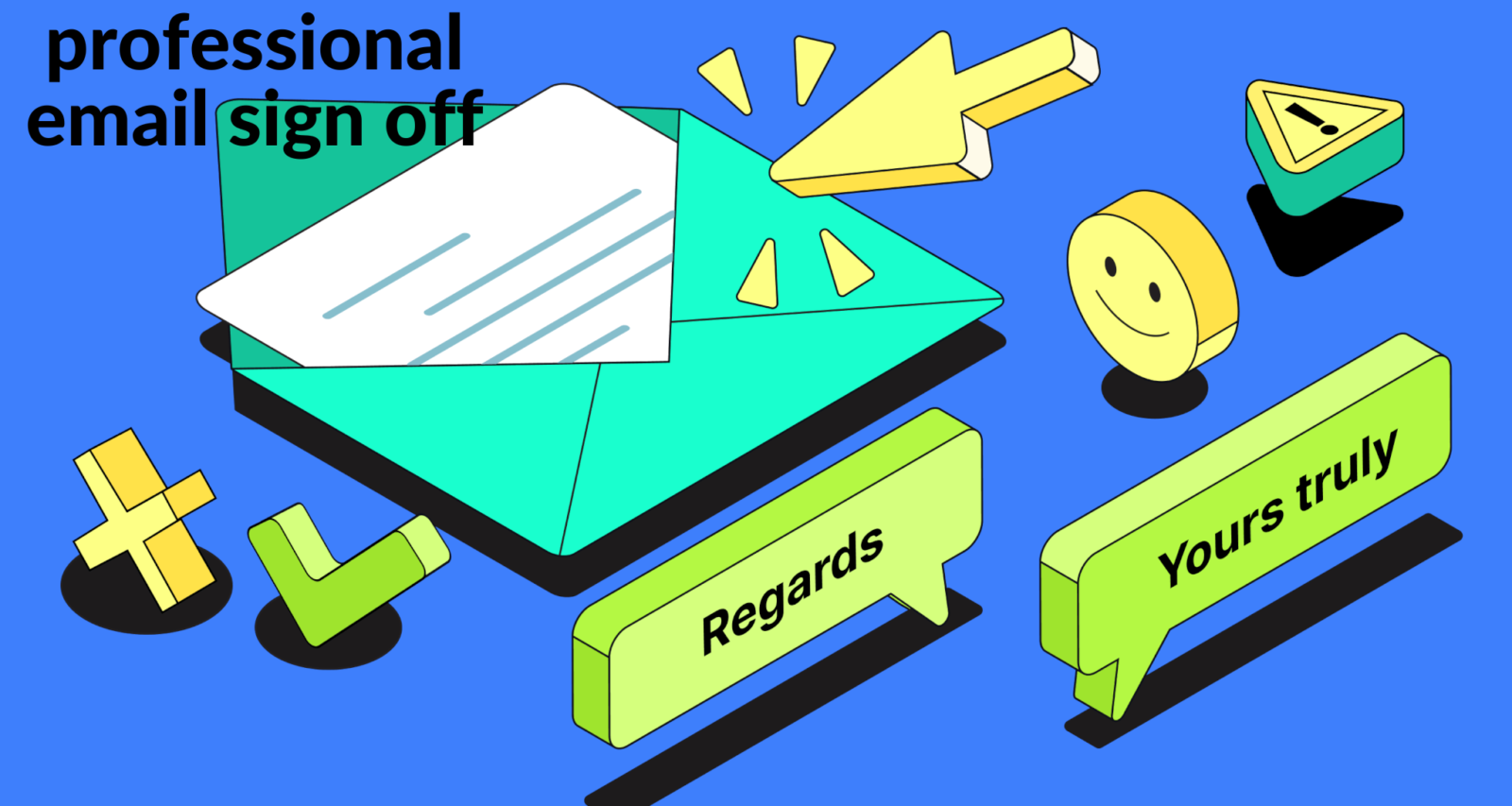When writing professional emails, it’s important to leave a good impression at the end. A strong professional email sign-off not only shows respect and clarity but also adds to the overall professionalism of your communication. In this guide, we’ll explore everything you need to know about professional email sign-offs, from what they are to how to choose the perfect one for your needs.
What Is a Professional Email Sign-Off?
A professional email sign-off refers to the closing statement or phrase used before you end an email. It is typically found at the bottom of your message and serves as a polite and respectful way to finish the email. The choice of sign-off can influence how the recipient perceives the tone and professionalism of your email. Some sign-offs are more formal, while others can be friendly but still maintain professionalism.
In business and professional communication, the sign-off is often considered just as important as the body of the email. It helps establish your tone and shows that you are considerate and respectful of the recipient’s time and attention.
Why Does a Professional Sign-Off Matter?
A professional email sign-off matters because it is the last thing your recipient reads before closing your message. It sets the tone for the final impression they get from you. A well-chosen sign-off can reinforce a positive message and leave the recipient with a good feeling about your professionalism.
Furthermore, the sign-off can convey your relationship with the recipient. For instance, a formal sign-off might be used for a first-time interaction with a client, while a slightly friendlier one could be used for colleagues you’ve worked with before. It’s important to choose the right sign-off that reflects the context of your email.
Best Professional Email Sign-Off Examples
Below are some of the best examples of professional email sign-offs that you can use depending on the tone and context of your email:

Common Sign-Offs for Work Emails
- Best regards – This is a commonly used and safe sign-off in professional email settings. It strikes a balance between formal and friendly and can be used for almost any work-related email.
- Kind regards – Slightly more formal than “best regards,” but still suitable for everyday work emails.
- Sincerely – This is one of the most traditional and formal ways to close a professional email, especially if you’re writing to someone you don’t know well or in a more formal context.
- Warm regards – A more personalized, yet still professional, option. It’s good for colleagues or clients you have an established relationship with.
- Thank you – This is an excellent option if you’re requesting something or want to show appreciation in a professional email.
- Regards – A simple, neutral closing, ideal for business communication.
Friendly But Professional Closings
- Take care – This sign-off is friendly but still appropriate for professional emails with colleagues or clients you have a good rapport with.
- Cheers – Common in more relaxed professional environments, this closing is often used when you want to show a bit of personality but still maintain professionalism.
- All the best – This closing strikes a friendly tone but remains professional, making it appropriate for a range of situations.
Formal Sign-Offs for Business Emails
- Yours faithfully – A very formal sign-off, typically used when you don’t know the recipient’s name, such as in business inquiries or formal letters.
- Respectfully – A respectful and formal closing, perfect for very formal or sensitive communication.
- With appreciation – This shows gratitude in a formal way and is excellent for business emails when you’re expressing thanks.
Here’s a simple bio table that you can use to present professional details in a clean and organized format:
| Field | Details |
|---|---|
| Name | [Your Full Name] |
| Job Title | [Your Current Job Title] |
| Company/Organization | [Company or Organization Name] |
| Industry | [Your Industry] |
| Education | [Your Degree/Qualification] |
| Experience | [Years of Experience, e.g., 5+ years] |
| Skills | [Key Professional Skills] |
| Specialization | [Your Area of Expertise] |
| Contact Email | [Your Professional Email] |
| Phone Number | [Your Contact Number] |
| Location | [City, State, Country] |
| LinkedIn Profile | [Your LinkedIn URL] |
| Website/Portfolio | [Your Personal/Professional Website] |
Let me know if you’d like this customized with sample data!
What Not to Use in Professional Email Sign-Offs
While there are many great sign-offs to choose from, there are some that should be avoided in professional communication. These include casual or overly familiar phrases that may diminish the professional tone of your message.
- Love – While it might be appropriate in personal communication, this is far too casual for professional emails.
- XOXO – Similar to “love,” this is far too informal for a business context and can come across as unprofessional.
- Later – While it’s okay among friends, this sign-off is too casual for work emails.
- Peace – Although it’s a popular casual sign-off, it can seem overly laid-back and inappropriate in most professional settings.
Choosing a professional sign-off is about understanding the context and ensuring the tone matches the purpose of your message.
How to Choose the Right Sign-Off
Choosing the right sign-off can be tricky, but there are a few factors to consider that can help you make the right decision. These include the tone of the email, your relationship with the recipient, and the context of your message.
- The tone of the Email – Is your email formal or informal? If it’s formal, you’ll want to use a more traditional sign-off, such as “Sincerely.” For more informal emails, a sign-off like “Best regards” may work better.
- Relationship with the Recipient – If you have a close working relationship with the recipient, a friendlier closing like “Warm regards” or “Cheers” may be appropriate. For a first-time contact, stick to something more formal.
- Purpose of the Email – Are you sending a thank you note, a request, or simply an update? The purpose can guide the best sign-off choice. For example, “Thank you” is ideal for a message that includes a request or gratitude.
Tips for Adding a Personal Touch
Adding a personal touch to your professional email sign-off can make the recipient feel valued and strengthen your relationship. Here are some simple ways to make your sign-off feel more personal:

Include Your Full Name
While it might seem obvious, always include your full name when closing a formal email. This ensures the recipient knows exactly who you are, particularly in situations where the email might be forwarded to others.
Add Your Job Title
If relevant, including your job title in the sign-off can add credibility and context to your email. This is especially useful when sending emails to people you don’t know well or in a business context where your role is important to the message.
Include Contact Information
Including a phone number, website, or other relevant contact details in your sign-off can make it easier for the recipient to get in touch with you. This is particularly useful for business or client communication.
How Professional Email Sign-Offs Improve Communication
Professional email sign-offs are more than just a formality—they help improve the overall quality of communication. A well-thought-out sign-off ensures clarity and professionalism, helping to close the conversation on a positive note. It demonstrates that you are respectful of the recipient’s time and fosters goodwill.
A sign-off can also help keep the tone of your email consistent. For example, using a warm sign-off like “Best regards” after a friendly message creates a pleasant and positive ending. It ensures that the recipient is left with a favorable impression of both you and your email.
The Bottom Line
In conclusion, choosing the right professional email sign-off is essential to making a positive impact on your recipient. Whether you’re sending a formal message or a friendly note, the closing of your email sets the tone for the overall interaction. By selecting a sign-off that reflects the context, relationship, and tone of your message, you can improve your communication and leave a lasting impression on your recipient.
Remember, professionalism is key. Keep it simple, respectful, and tailored to the situation for the best results in your professional email correspondence.


















Got a Questions?
Find us on Socials or Contact us and we’ll get back to you as soon as possible.